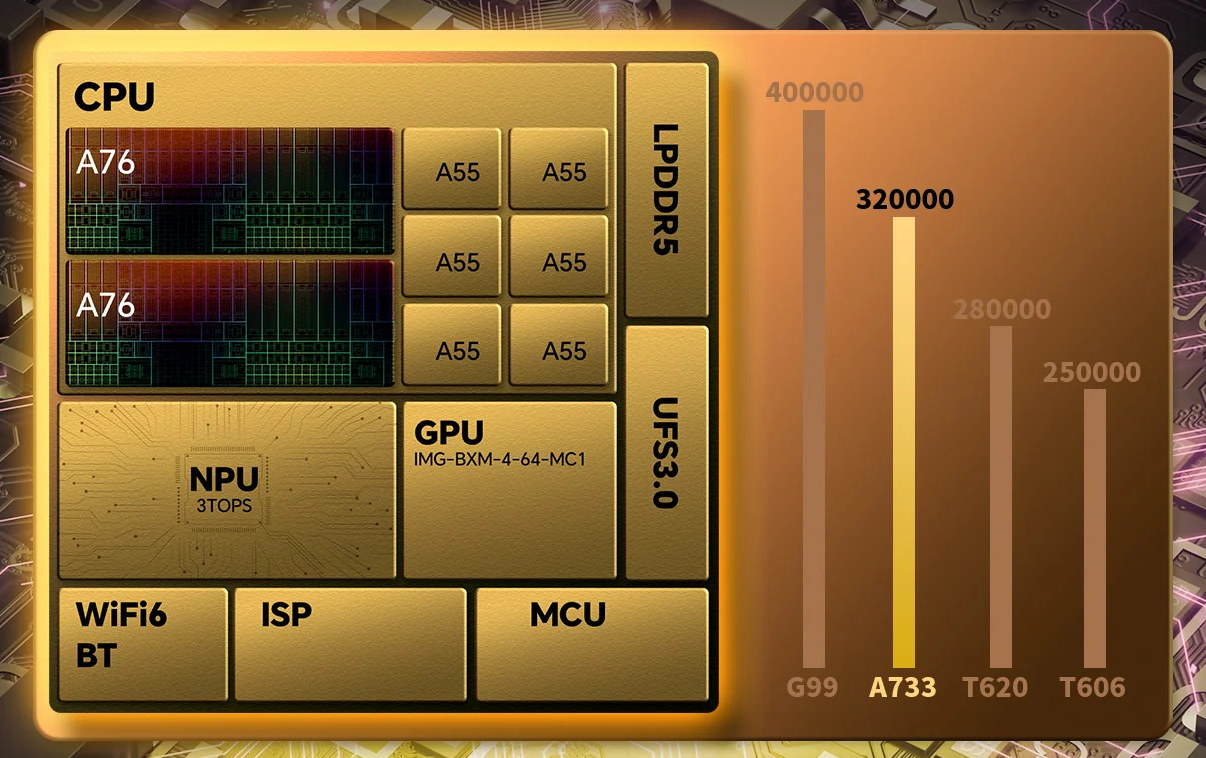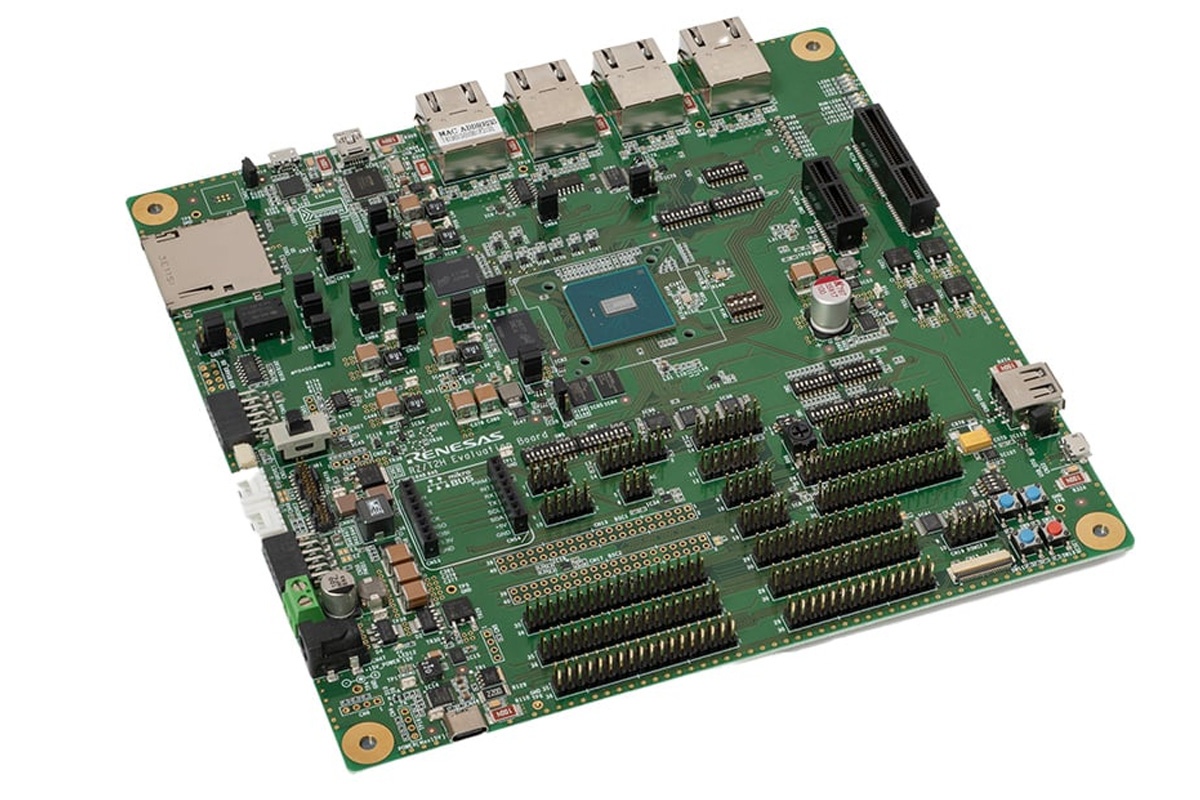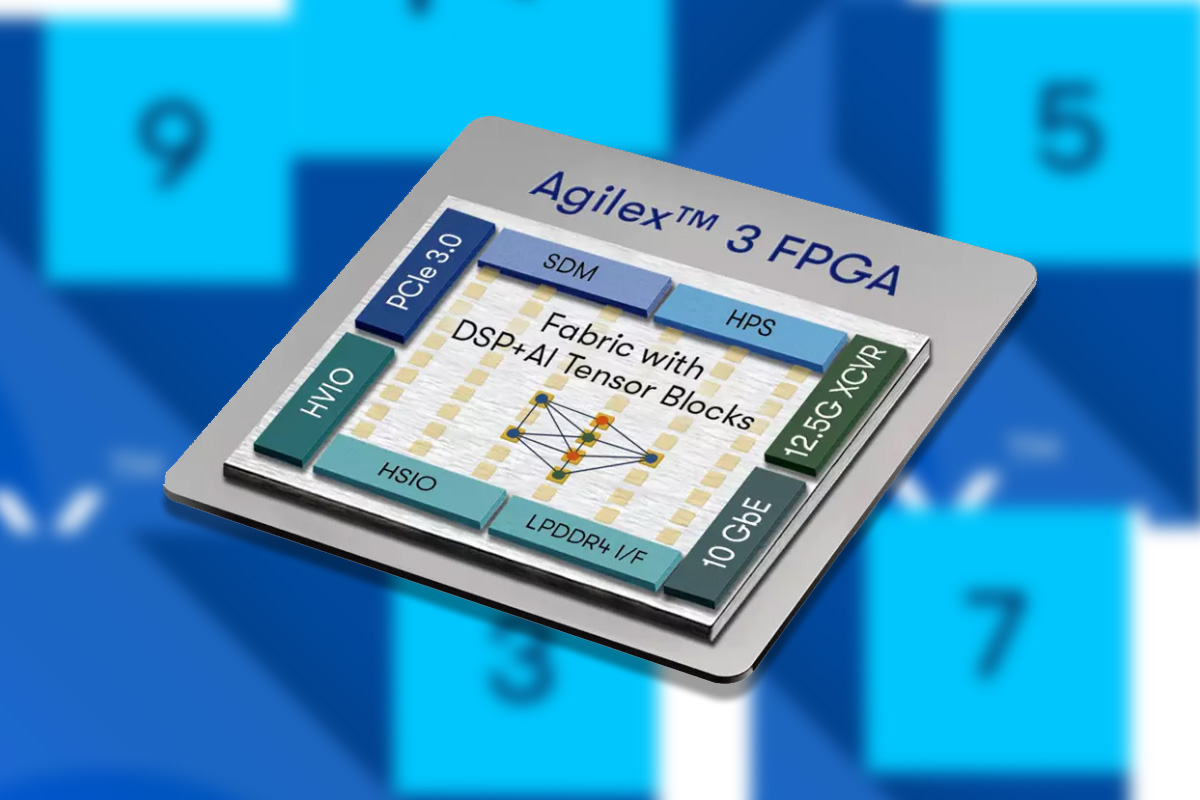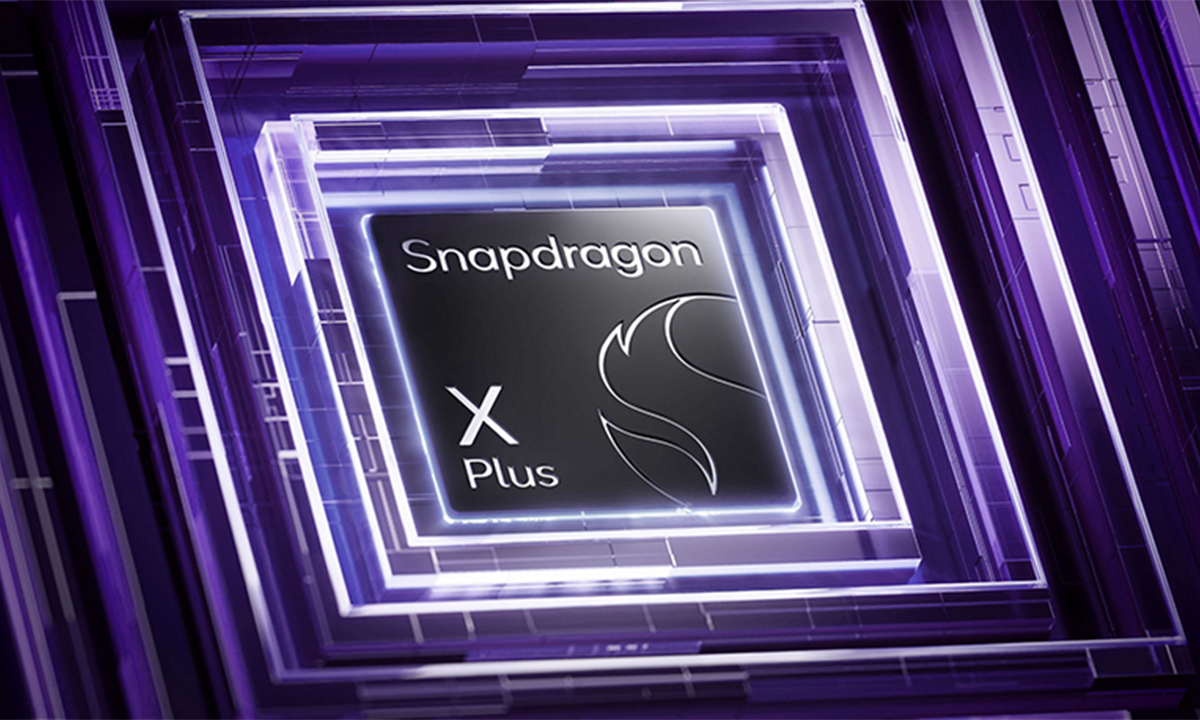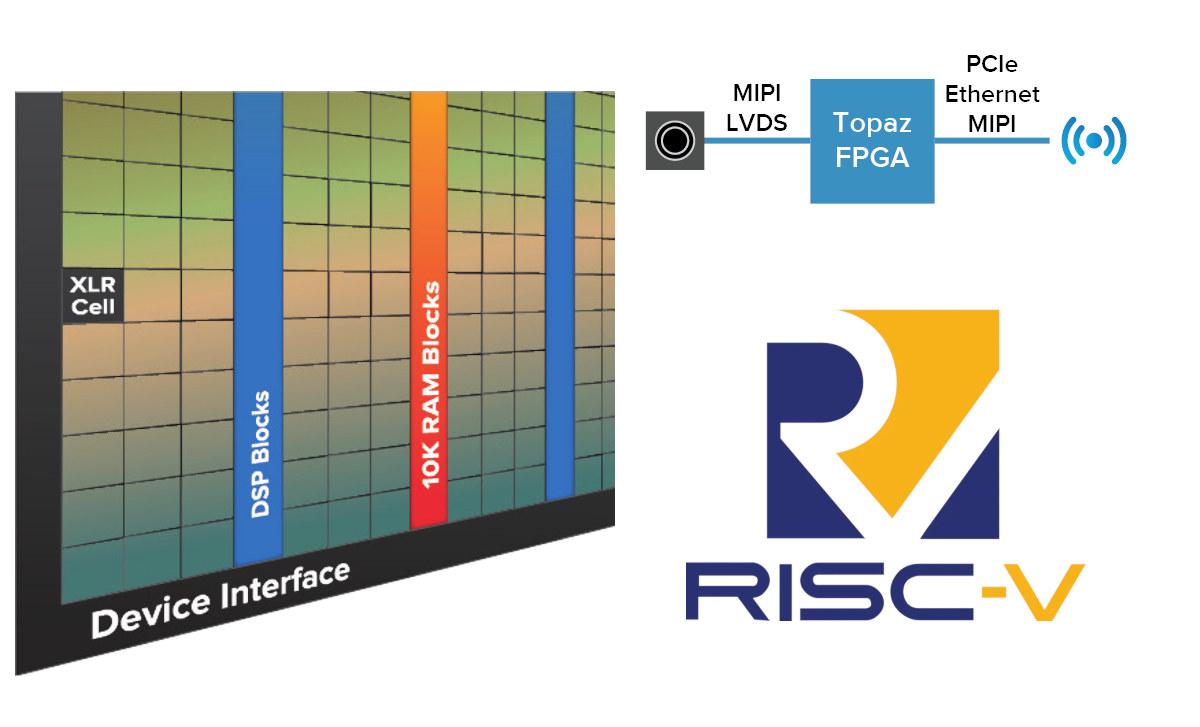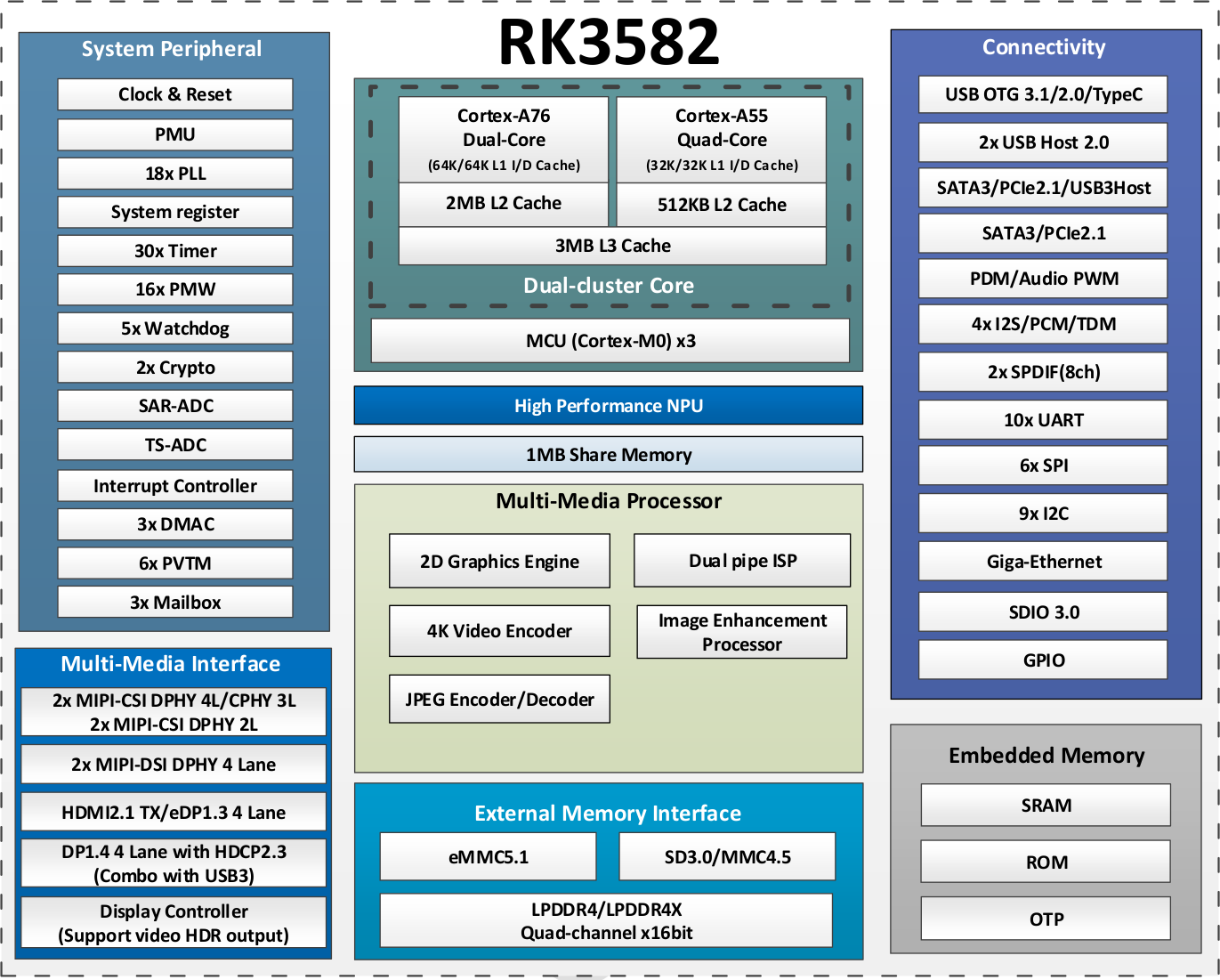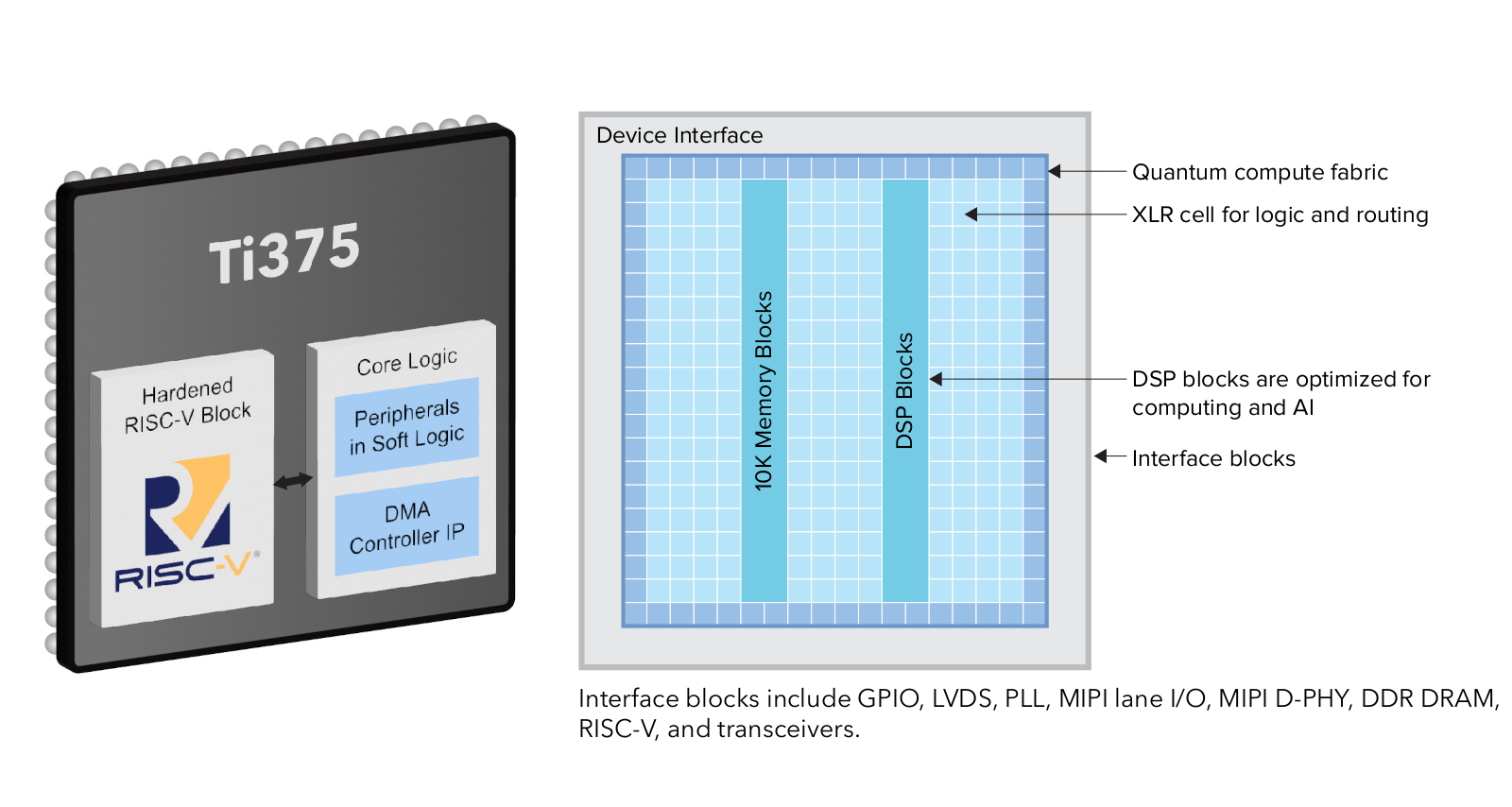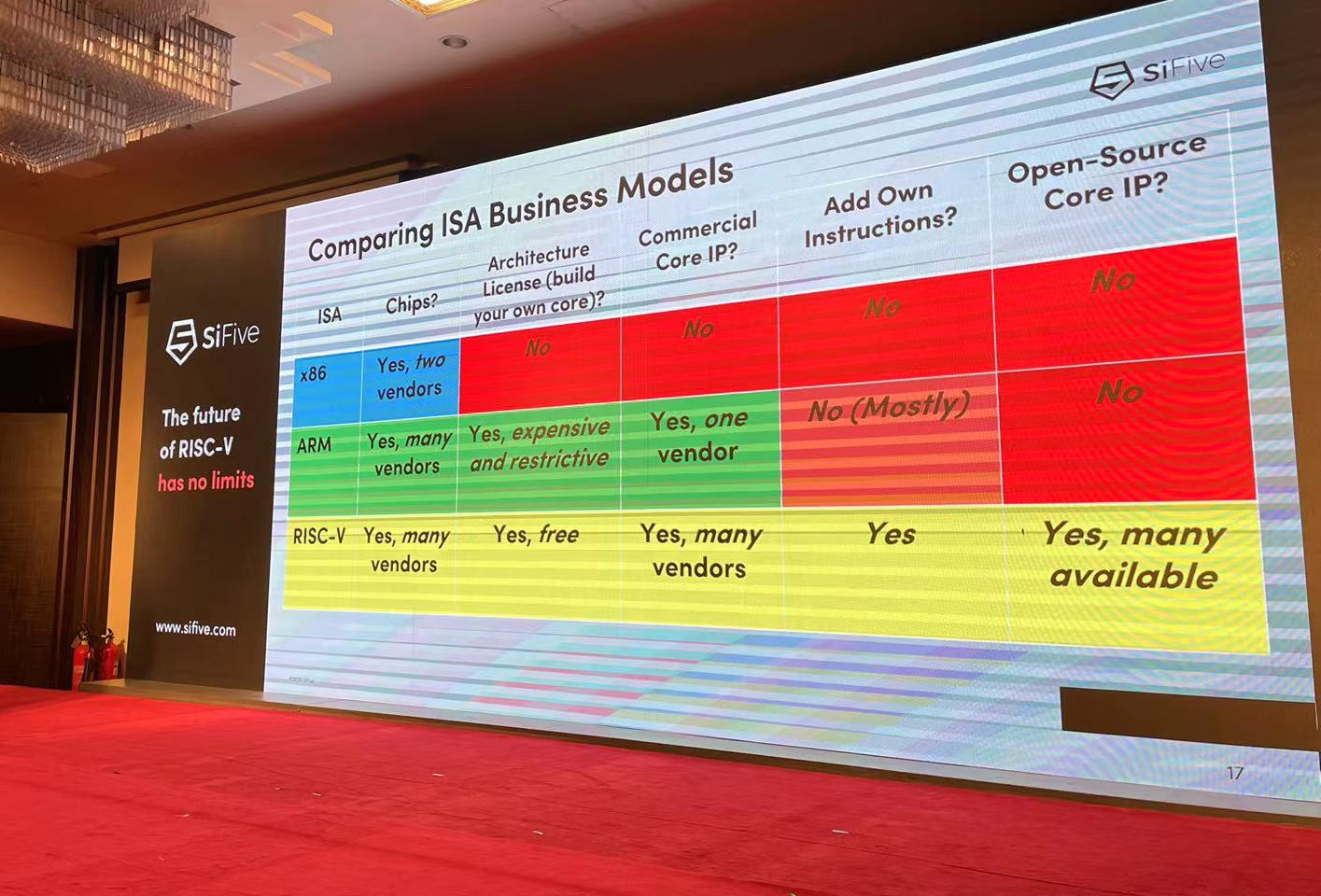Allwinner A733 is an octa-core Cortex-A76/A55 processor with an optional 3 TOPS NPU and support for up to 16GB RAM designed for Android 15 tablets and laptops such as the Teclast P50Ai with a 10.92-inch touchscreen display. With two Cortex-A76 cores, six Cortex-A75 cores, an Imagination BXM-4-64 MC1 GPU, and an NPU, the Allwinner A733 looks very similar to the Allwinner A736 we noted in a roadmap last year. But there’s no news about the A736, so maybe the name was dropped and the Allwinner A733 was launched instead. Allwinner A733 specifications: CPU Dual-core Arm Cortex-A76 @ up to 2.00 GHz Hexa-core Arm Cortex-A55 @ up to 1.79 GHz Single-core RISC-V E902 real-time core GPU – Imagination Technologies BXM-4-64 MC1 VPU 8Kp24 H.265/VP9/AVS2 decoding (no mention of AV1) 4Kp30 H.265/H.264 encoding AI accelerator – Optional 3 TOPS NPU Memory 192 KB SRAM + 512 KB shared SRAM 32-bit LPDDR4/LPDDR4x/LPDDR5 interface […]
Renesas RZ/T2H Cortex-A55/R52 industrial MPU and Dev Board support EtherCAT, PROFINET, and TSN
Renesas RZ/T2H industrial MPU is the most powerful member of its RZ/T2 series of real-time microprocessors. The MPU features four Arm Cortex-A55 CPUs for application tasks and two Cortex-R52 CPUs for real-time control. It supports 9-axis motor control with 3-phase PWM timers, delta-sigma interfaces, and encoder interfaces. It also supports Industrial Ethernet protocols like EtherCAT, PROFINET, and TSN. These features make it ideal for industrial applications such as industrial robots, PLCs, motion controllers, and CNC machines. Renesas launched the RZ/T2L single-core Arm Cortex-R52 MPU just last year, and before that, in 2022, they launched the RZ/T2M dual Arm Cortex-R52 MPU. The RZ/T2L was just a cost-down version of RZ/T2M with an EtherCAT controller, compared to those old controllers the latest RZ/T2H supports 9-axis motor control and compatibility with various industrial Ethernet protocols. Renesas RZ/T2H specifications: CPU 4x Arm Cortex-A55 (64-bit) clocked at up to 1.2GHz with 32KB L1 I/D cache, 1MB L3 cache 2x […]
Altera’s 7nm Agilex 3 SoC FPGA features Cortex-A55 cores, AI Tensor Block, DSP, 10 GbE, and more.
Altera, an independent subsidiary of Intel, has launched the Altera Agilex 3 SoC FPGA lineup built on Intel’s 7nm technology. According to Altera, these FPGAs prioritize cost and power efficiency while maintaining essential performance. Key features include an integrated dual-core Arm Cortex A55 processor, AI capabilities within the FPGA fabric (tensor blocks and AI-optimized DSP sections), enhanced security, 25K–135K logic elements, 12.5 Gbps transceivers, LPDDR4 support, and a 38% lower power consumption versus competing FPGAs. Built on the Hyperflex architecture, it offers nearly double the performance compared to previous-generation Cyclone V FPGAs. These features make this device useful for manufacturing, surveillance, medical, test and measurement, and edge computing applications. Altera’s Agilex 3 AI SoC FPGA specifications Device Variants B-Series – No definite information is available C-Series – A3C025, A3C050, A3C065, A3C100, A3C135 SoC FPGAs Hard Processing System (HPS) – Dual-core 64-bit Arm Cortex-A55 up to 800 MHz that supports secure […]
Qualcomm Snapdragon X Plus 8-core – A 4 GHz octa-core processor for entry-level Copilot+ PCs and laptops
Qualcomm’s Snapdragon X line of ARM-based processors is designed for Windows laptops, offering CPUs capable of competing with Intel and AMD processors. The Snapdragon X Plus (10 core) and Snapdragon X Elite, announced last year, include high-performance NPUs for AI processing. Qualcomm has now introduced the entry-level Snapdragon X Plus 8-core processor, targeting the $700 to $900 laptop market instead of the ~$1,300+ asked for something like the Microsoft Surface Laptop 15. It reduces CPU and graphics performance while maintaining the same AI features as the higher-end models. The Qualcomm Snapdragon X Plus lineup includes two octa-core processors: the X1P-46-100 and X1P-42-100, both built on a 4nm process. These processors come with eight Oryon CPU cores, clocked at 4GHz and 3.4GHz respectively, and are equipped with the Qualcomm Hexagon NPU, delivering 45 TOPS for AI tasks like Copilot+ PC. They also integrate Qualcomm Adreno GPUs offering 2.1 TFLOPS for the […]
Efinix introduces the low-power Topaz RISC-V SoC FPGA family for “high-volume, mass-market applications”
Efinix Topaz is a new low-power RISC-V SoC FPGA family manufactured with the same 16nm TSMC process as the Efinix Titanium SoC FPGA, but optimized for high-performance in a low-power footprint, and targetting high-volume, mass-market applications. The Topaz SoC FPGAs provide fewer features than the Titanium family but still offer up to four RISC-V hard cores, PCIe Gen3, MIPI interfaces, LPDDR4, LVDS, and 12.5 Gbps transmitter with most features being optional and depending on the exact SKUs selected. Efinix Topaz key features and specifications: FPGA compute fabric Up to 326,080 logic elements (LEs) Up to 19.22 Mbits embedded memory Up to 1,877 10-Kbit SRAM blocks Up to 1,008 embedded DSP blocks Memory – 10-kbit high-speed, embedded SRAM, configurable as single-port RAM, simple dual-port RAM, true dual-port RAM, or ROM FPGA interface blocks Optional 32-bit quad-core hardened RISC-V block (RISCV32I with M, A, C, F, and D extensions and six pipeline […]
Rockchip RK3582 is a cost-down version of RK3588S with two Cortex-A76 cores, four Cortex-A55 cores, no GPU
Rockchip RK3582 hexa-core SoC is pin-to-pin compatible with the popular Rockchip RK3588S octa-core Cortex-A76/A55 SoC, but only features two Cortex-A76 cores, a 5 TOPS NPU (instead of 6 TOPS) and does not come with a 3D GPU. I was first made aware of the Rockchip RK3582 in October 2023 when I was sent a photo of a board allegedly for a TV box, but while the RK3582 still features a 4K video decoder, the lack of a 3D GPU could make it problematic with 3D accelerated user interface. We now have more details with Radxa having released the datasheet and a few more interesting details. Rockchip RK3582 specifications: Hexa-core CPU – 2x Cortex-A76 and 4x Cortex-A55 cores in dynamIQ configuration (frequencies are still shown as TBD in the datasheet) GPU No 3D GPU 2D graphics engine up to 8192×8192 source, 4096×4096 destination AI Accelerator – 5 TOPS NPU 3.0 (Neural […]
Efinix Titanium Ti375 FPGA offers quad-core hardened RISC-V block, PCIe Gen 4, 10GbE
Efinix Titanium Ti375 SoC combines high-density, low-power Quantum compute fabric with a quad-core hardened 32-bit RISC-V block and features a LPDDR4 DRAM controller, a MIPI D-PHY for displays or cameras, and 16 Gbps transceivers enabling PCIe Gen 4 and 10GbE interfaces. The Titanium Ti375 also comes with 370K logic elements, 1.344 DSP blocks, 2,688 10-Kbit SRAM blocks, and 27,53 Mbits embedded memory, as well as DSP blocks optimized for computing and AI workloads, and XLR (eXchangeable Logic and Routing) cells for logic and routing. Efinix Titanium Ti375 specifications: FPGA compute fabric 370,137 logic elements (LEs) 362,880 eXchangeable Logic and Routing (XLR) cells 27,53 Mbits embedded memory 2,688 10-Kbit SRAM blocks 1,344 embedded DSP blocks for multiplication, addition, subtraction, accumulation, and up to 15-bit variable-right-shifting Memory – 10-kbit high-speed, embedded SRAM, configurable as single-port RAM, simple dual-port RAM, true dual-port RAM, or ROM FPGA interface blocks 32-bit quad-core hardened RISC-V block […]
SiFive unveils P870 high-performance core, discusses future of RISC-V
SiFive has just given a presentation at Hot Chips 2023 introducing the new high-performance P870 RISC-V core and its automotive equivalent the P870-A core, plus discussing RISC-V in general, its previous generation RISC-V cores, and what to expect going forward. SiFive has not officially announced the P870 and P870-A cores just yet, so most of the information we have from the English-speaking Internet is from ServeTheHome who managed to get some presentation slides, but this is also corroborated by various Chinese sources on Baidu and Guokr. SiFive P870 and P870-A The P870 and P870-A RISC-V cores are new cores from the SiFive Performance family compatible with the RISC-V RVA23 profile and succeeding the SiFive P670 core. The SpecINT2k6 benchmark reports 17 points per GHz on the P870 compared to 13.2 points per GHz for the P670 (comparable to the Arm Cortex-A78) or about a 29% higher performance at the same […]


